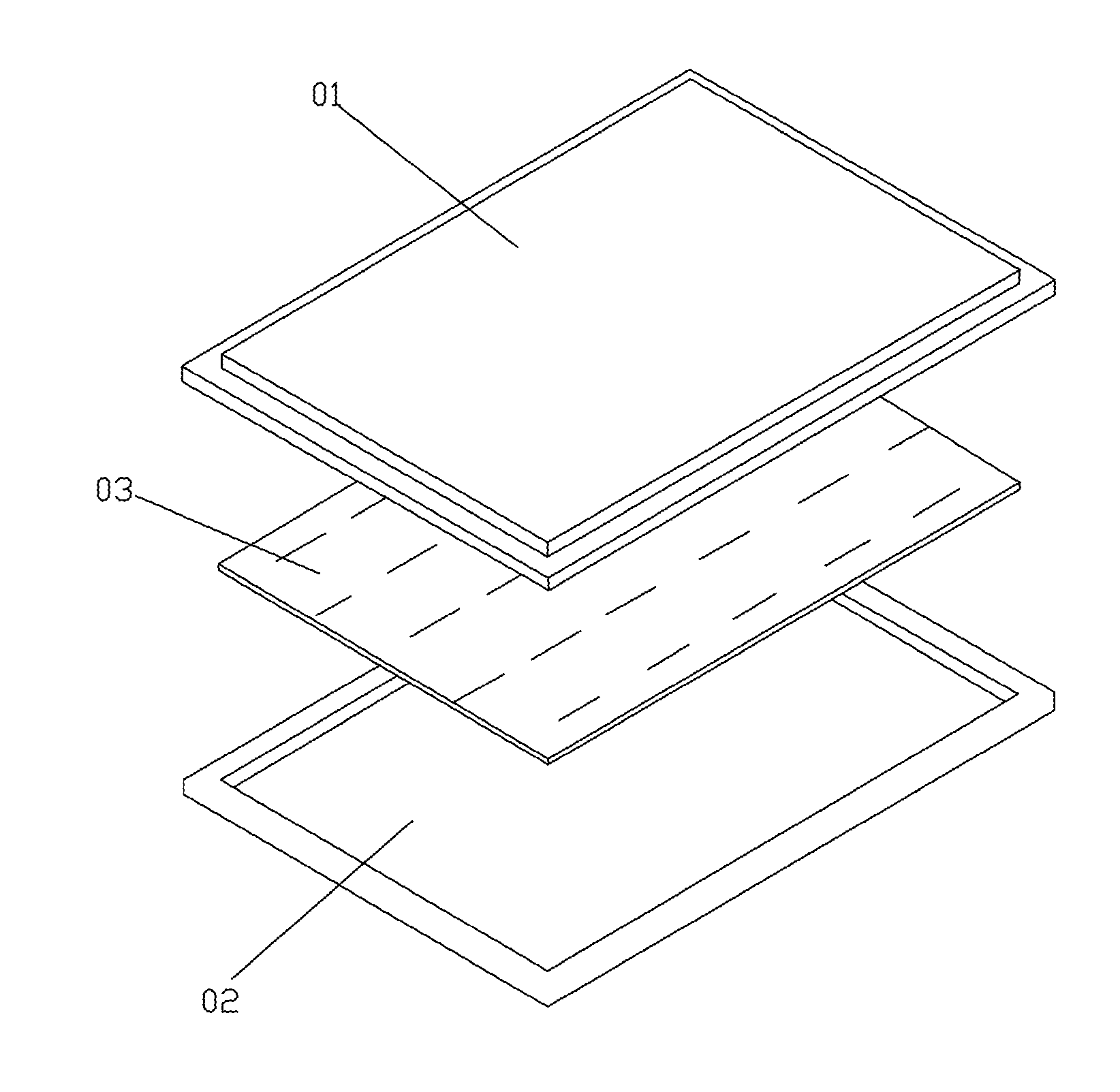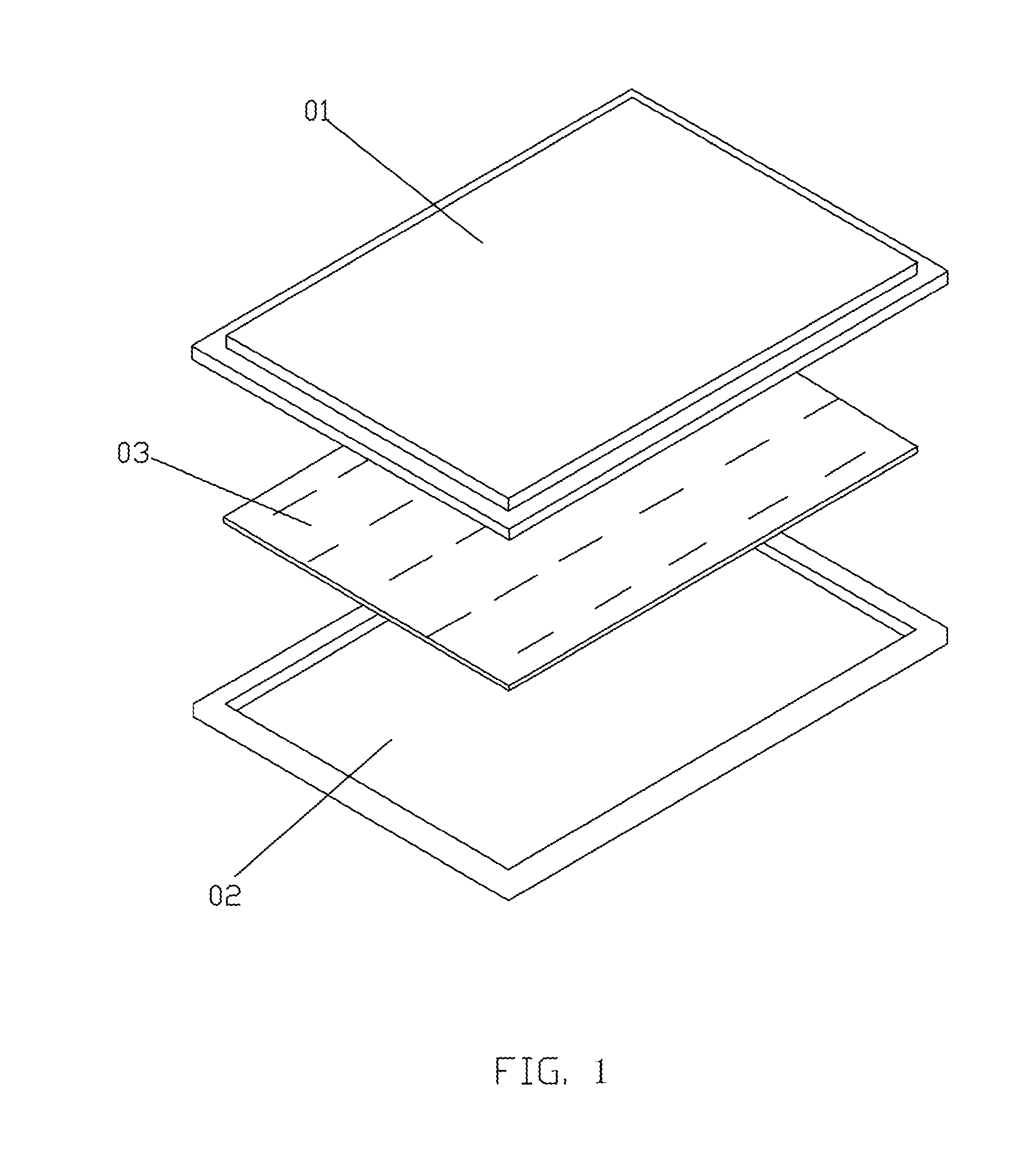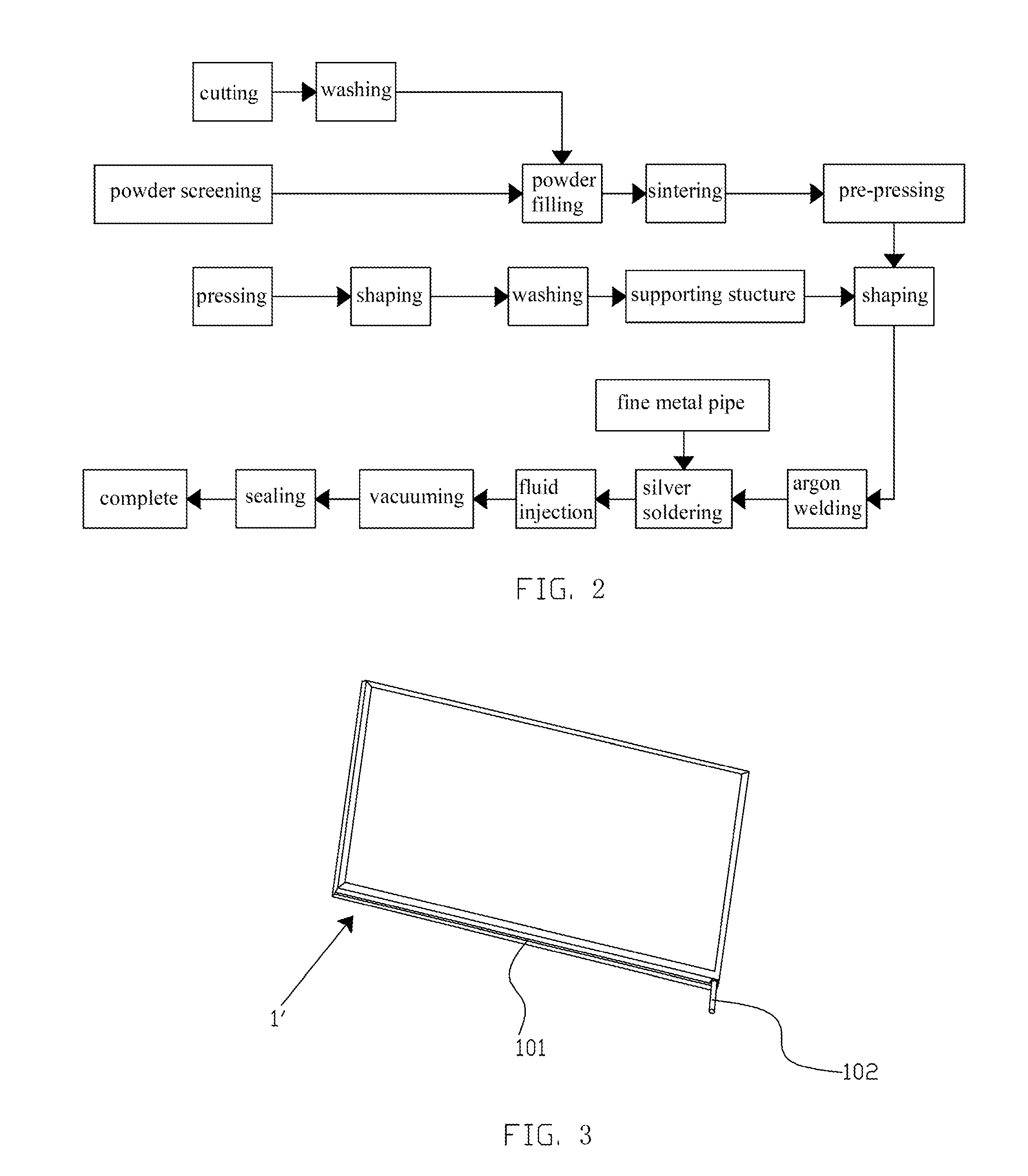Vapor chamber manufacturing method
a manufacturing method and vapor chamber technology, applied in manufacturing tools, semiconductor/solid-state device details, lighting and heating apparatus, etc., can solve the problems of high heat generation, difficult technique, and easily over-exceeding the design standard of the vapor chamber produced, so as to achieve reasonable structure, reduce manufacturing costs, and increase heat dissipation efficiency
- Summary
- Abstract
- Description
- Claims
- Application Information
AI Technical Summary
Benefits of technology
Problems solved by technology
Method used
Image
Examples
Embodiment Construction
[0043]As shown by the process flow diagram of the first embodiment of the present invention in FIG. 4, wherein the metal material used in this embodiment is a metal tube, the method comprises the following steps:
[0044]Step 1, material preparation: preparing the metal material of the vapor chamber, and cutting the material to predetermined dimensions; as using metal tube, some sub-steps for processing the metal tube are includes:[0045]Cutting: cutting the raw metal tube to predetermined size, straightening the raw metal tube before cutting to ensure the yield of the final product, and washing the metal tube after cutting to ensure the quality of the cavity of the metal tube; and[0046]Rod insertion: inserting a mold rod matching with the internal diameter of the metal tube into the cavity of the metal tube, wherein the mold rod will be sintered with the raw powder in a later step to form the required structure in the cavity of the metal tube.
[0047]Step 2, powder filling and sintering:...
PUM
| Property | Measurement | Unit |
|---|---|---|
| thickness | aaaaa | aaaaa |
| thickness | aaaaa | aaaaa |
| thickness | aaaaa | aaaaa |
Abstract
Description
Claims
Application Information
 Login to View More
Login to View More - R&D
- Intellectual Property
- Life Sciences
- Materials
- Tech Scout
- Unparalleled Data Quality
- Higher Quality Content
- 60% Fewer Hallucinations
Browse by: Latest US Patents, China's latest patents, Technical Efficacy Thesaurus, Application Domain, Technology Topic, Popular Technical Reports.
© 2025 PatSnap. All rights reserved.Legal|Privacy policy|Modern Slavery Act Transparency Statement|Sitemap|About US| Contact US: help@patsnap.com



